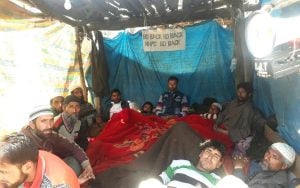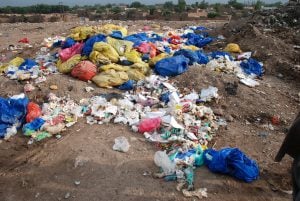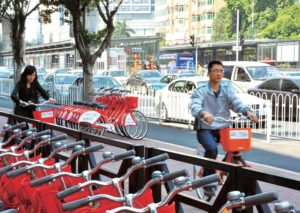We see the tangible impacts of climate change in the retreating glaciers, depleting rivers and shifting agricultural patterns of the Himalayan region. The much reiterated call for sustainability – the need for a sustainable present for a sustainable future – underpins multiple climate change reports. But is this understanding reaching the common Himalayan people, or are sustainable solutions presupposed as emerging only from scientific expertise? If the latter is the case, the “solutions” ignore the value of local knowledge and skills in triggering bottom up climate change solutions. Today, the ‘remote’ borderlands of the Indian Himalayas are emerging as central sites of different socio-environmental conflicts due to an increasing dissonance between institutional and local understanding of sustainable development. The Trans Himalayan valley of Lahaul (Lahaul and Spiti district) in the Indian state of Himachal Pradesh – and my ancestral home – is one such frontier where unfortunately development solutions are unfolding in a similar fashion.
Lahaul lies on the western edge of the larger Tibetan plateau, is lightly populated and hard to access. There are many elements that shape Lahaul’s remoteness. The most prominent is Rohtang La, the high altitude pass at 3,800 metres that geographically and culturally demarcates Lahaul from the southern district of Kullu. For almost six months, the Manali-Leh Highway, approximately 150 kilometres of which runs through Lahaul, is buried deep under the snow. During this period, the Himachal Pradesh government run helicopter service is the only way for locals to move in and out of the valley. Post 2019, this will change. The 8.8 kilometre Rohtang Tunnel, a Ministry of Defence project currently under construction, promises year-long access to the valley. In this massive infrastructure project also rest individual and collective hopes of a connected and developed future. Apart from the unobstructed access, the tunnel will drastically reduce travel between Manali and Sissu, the village of Lahaul where the northern portal of the tunnel opens, from four hours to approximately one hour.

The Himachal Pradesh Power Corporation Limited (HPPCL), the government agency executing the 300 MW Jispa project, has its own perspective on development. In its latest public consultation held in July 2017 in Jispa village, the HPPCL Managing Director implored the local protestors to consider the project’s benefits beyond the region. “I request everyone to rethink the importance of Jispa project. You have to decide whose interests are paramount. This project is a matter of national interest,” he declared. More than twelve villages of the Tod belt of Lahaul will be completely/partially submerged by this hydropower dam.

Vikram Katoch, a 29 year old man from Tandi village of Lahaul, is a passionate advocate of ecological tourism. In 2017, Vikram put all his energies into building his first campsite in his village, after having gained six years of work experience with several multinational travel companies in Delhi. “I was really homesick. It is very sad that even skilled and educated youth have less opportunities to earn bread and butter in the mountains. Youth should innovate to find means to earn at home,” said Vikram. For him, innovation means to develop thoughtful tourism: investing in second hand tents, creating a library of donated books for travellers and local children, organising client-villagers’ interactions, and devising other creative ways to offer an immersive travel experience in Lahaul.
Not everyone thinks like Vikram. In fact, many imagine Lahaul as a high end tourism destination with ‘world class’ facilities. Tourists, especially paise waale (those with money) seek big hotels with comforts and locations that are easily accessible.
In this respect, Vikram had no ‘world class’ facilities at his disposal, and the first year put his marketing skills to test. He was pleasantly surprised with the client turnout, clients who not only appreciated his frugal camp, but those who shared similar sensibilities and visions about the future. “We cannot afford to make Lahaul like Manali. We don’t have to experiment with energy intensive evils like hydroprojects, mass tourism and unplanned construction. We have to make sure that we don’t sacrifice our natural resources for the sake of somebody’s greed”, asserted Vikram.

This is a crucial juncture for the valley, and bodies like the Lahaul Hoteliers Association can play a vital bottom up role in forwarding the agenda of environmental sustainability. In 2016, the association put forward the demand for a ‘special’ tourism master plan for Lahaul-Spiti with the Union Minister of Tourism. “We need leaders who are visionary. Right now, we are relatively untouched by development as we are cut off for six months. The Rohtang Tunnel will change the face of Lahaul for good and bad,” said Tashi Barongpa, the general secretary of the association. In January 2017, Save Lahaul-Spiti collective also submitted a memorandum to the Additional Director of Tourism of Himachal Pradesh demanding the urgent formation of a Tourism Development Council – a council which would act as a facilitator of sustainable tourism rather than a regulator, which is inclusive and not just another tool in hands of a powerful few.

Such everyday ideas, practices and actions of young people can constructively shape our policies on sustainable development. Their ideas and solutions must feed into policy decisions in the Himalayas, rather than be dismissed or marginalised as un-scientific.

![<p>Women protestors outside the District Administration headquarters at Keylong in Lahaul [image by: Kesang Thakur]</p>](https://dialogue.earth/content/uploads/2018/04/Photo-5.jpg)






![Shahzad Qureshi standing inside his urban forest [image by: Zofeen T. Ebrahim]](https://dialogue.earth/content/uploads/2018/04/IMG_1295-300x225.jpg)
